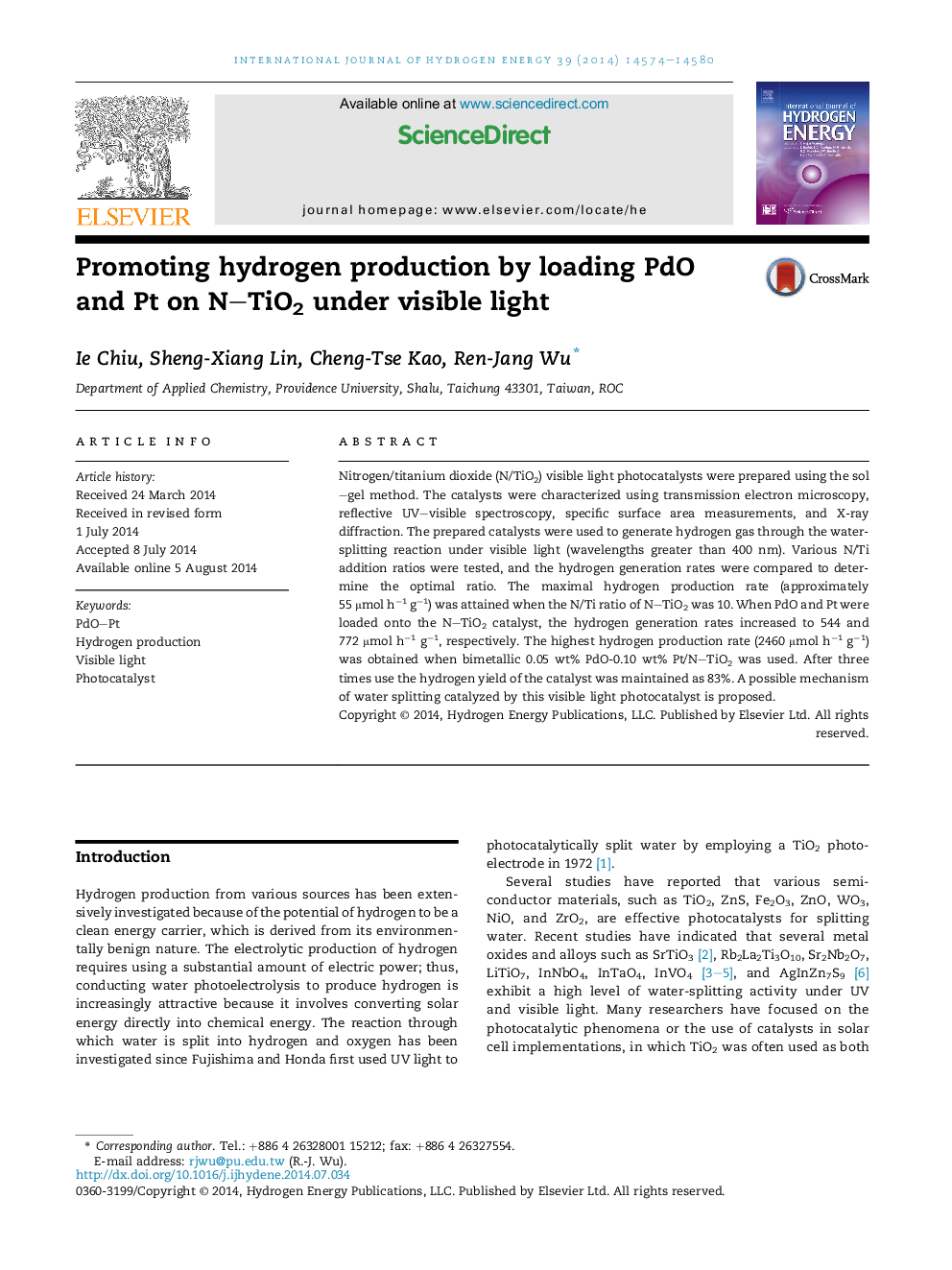| Article ID | Journal | Published Year | Pages | File Type |
|---|---|---|---|---|
| 7718017 | International Journal of Hydrogen Energy | 2014 | 7 Pages |
Abstract
Nitrogen/titanium dioxide (N/TiO2) visible light photocatalysts were prepared using the sol-gel method. The catalysts were characterized using transmission electron microscopy, reflective UV-visible spectroscopy, specific surface area measurements, and X-ray diffraction. The prepared catalysts were used to generate hydrogen gas through the water-splitting reaction under visible light (wavelengths greater than 400 nm). Various N/Ti addition ratios were tested, and the hydrogen generation rates were compared to determine the optimal ratio. The maximal hydrogen production rate (approximately 55 μmol hâ1 gâ1) was attained when the N/Ti ratio of N-TiO2 was 10. When PdO and Pt were loaded onto the N-TiO2 catalyst, the hydrogen generation rates increased to 544 and 772 μmol hâ1 gâ1, respectively. The highest hydrogen production rate (2460 μmol hâ1 gâ1) was obtained when bimetallic 0.05 wt% PdO-0.10 wt% Pt/N-TiO2 was used. After three times use the hydrogen yield of the catalyst was maintained as 83%. A possible mechanism of water splitting catalyzed by this visible light photocatalyst is proposed.
Related Topics
Physical Sciences and Engineering
Chemistry
Electrochemistry
Authors
Ie Chiu, Sheng-Xiang Lin, Cheng-Tse Kao, Ren-Jang Wu,
